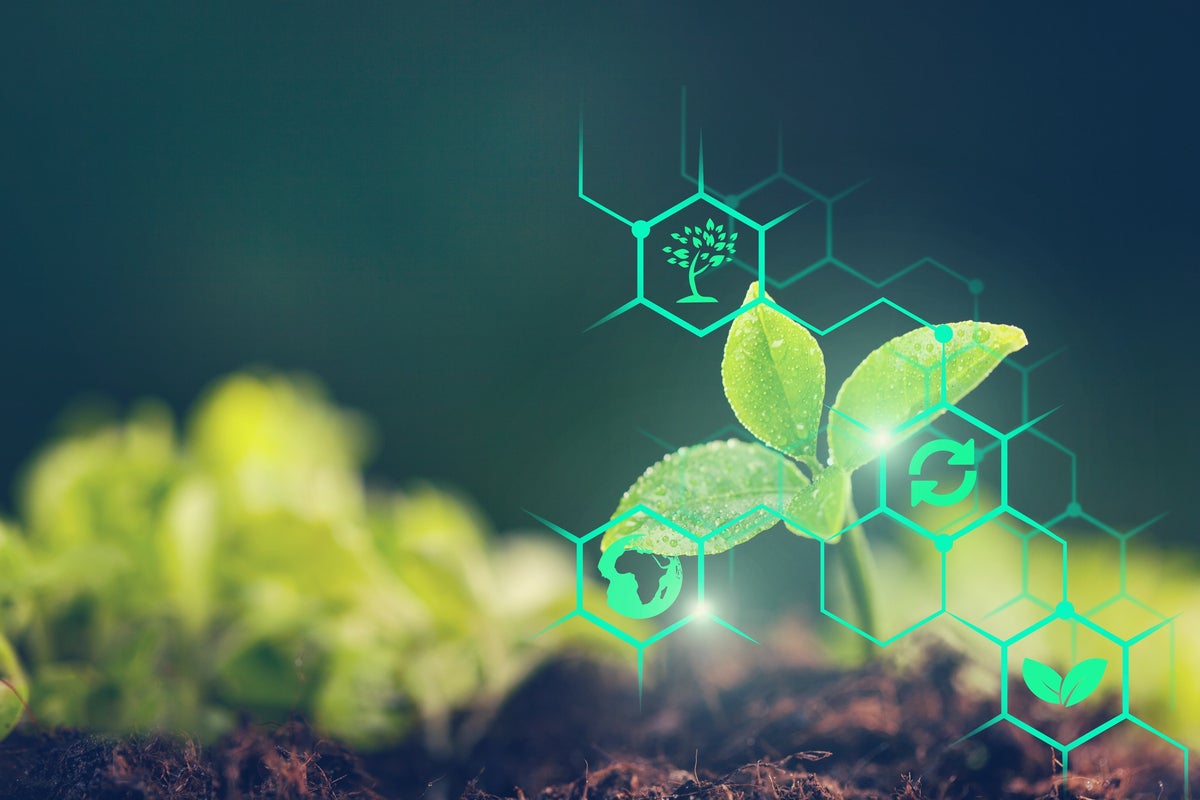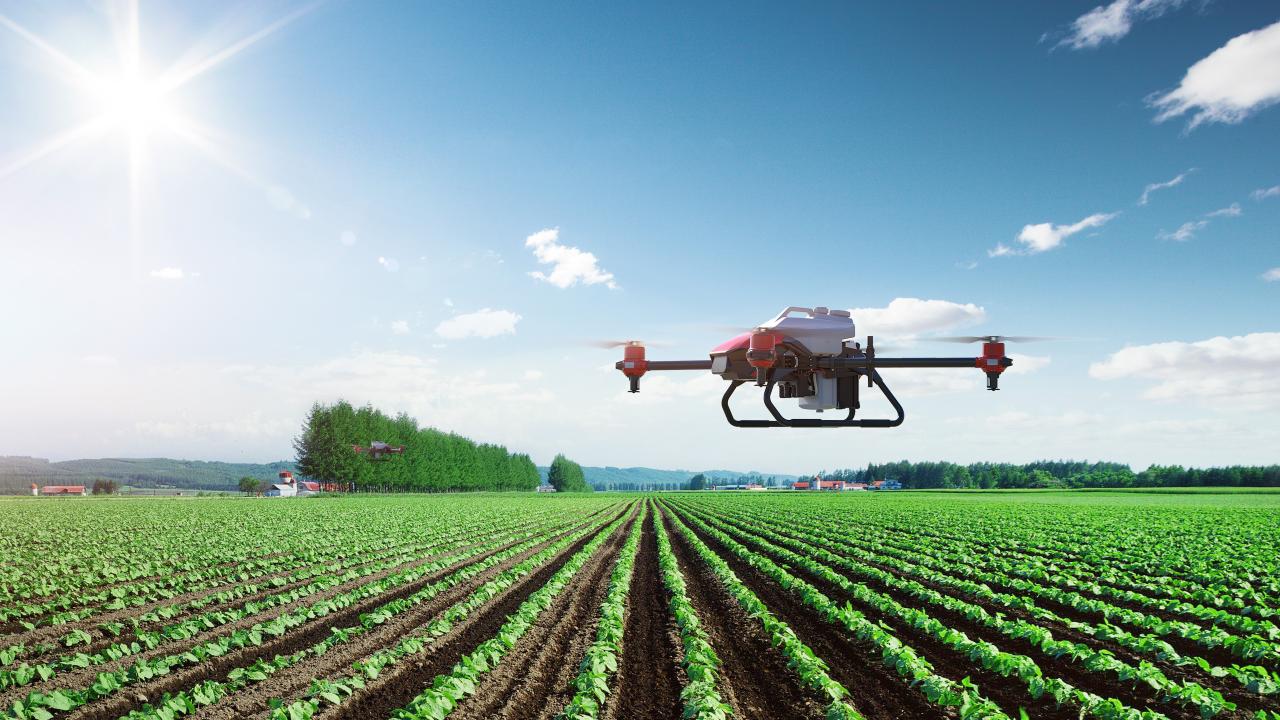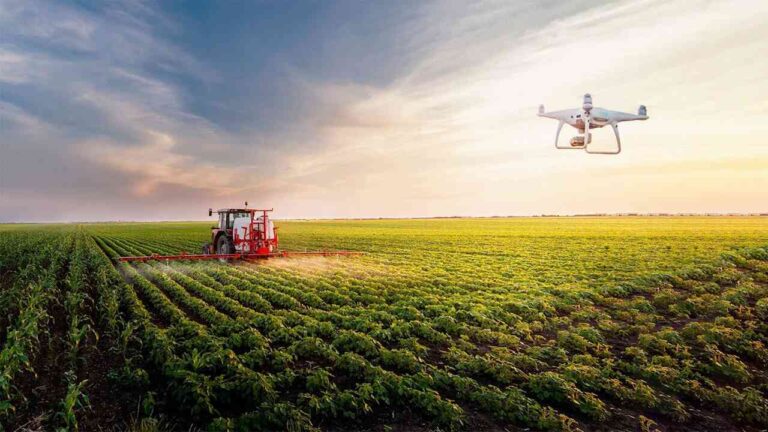The global challenge of feeding an ever-growing population while contending with climate change, diminishing arable land, and resource scarcity is monumental. Traditional agricultural practices, while foundational, are often insufficient to meet these demands sustainably. This is where agri-tech, or agricultural technology, emerges as a transformative force. Agri-tech encompasses a vast array of innovations, from precision farming and smart irrigation to biotechnology and vertical farms, all aimed at enhancing productivity, optimizing resource use, and building resilience in food systems. This article provides a comprehensive exploration of agri-tech, delving into its core components, the critical drivers behind its rapid adoption, its profound impact on various aspects of food production, and the significant challenges and immense opportunities that define its pivotal role in feeding the world.
What is the Agri-Tech’s Core?

Agri-tech represents the application of technology and scientific innovation across the entire agricultural value chain, from seed to table. Its primary goal is to make farming more efficient, sustainable, and profitable.
A. Precision Agriculture (Precision Farming): This approach uses data and technology to manage variations within fields, optimizing inputs and maximizing yields.
A. Sensors and IoT (Internet of Things): Deploying networks of sensors (soil, weather, crop, livestock) that collect real-time data on environmental conditions and biological states. These sensors are often connected wirelessly, providing continuous monitoring.
B. Data Analytics and AI/ML: Analyzing vast datasets from sensors, drones, satellites, and historical records to identify patterns, predict outcomes (e.g., disease outbreaks, yield forecasts), and inform decision-making. AI and Machine Learning algorithms can process this data to provide actionable insights.
C. GPS and GIS (Geographic Information Systems): Using satellite navigation to guide farm machinery, map field variations, and apply inputs precisely where needed. GIS creates layers of geographical information for comprehensive analysis.
D. Variable Rate Technology (VRT): Applying inputs like water, fertilizers, and pesticides at varying rates across a field, precisely matching the needs of specific areas, rather than applying a uniform rate across the entire field. This reduces waste and environmental impact.
B. Agricultural Robotics and Automation: Employing automated machines to perform farm tasks with greater precision, efficiency, and less manual labor.
A. Autonomous Tractors and Harvesters: Self-driving farm machinery that can operate 24/7, reducing labor costs and increasing efficiency.
B. Drones (UAVs – Unmanned Aerial Vehicles): Used for aerial imaging (crop health monitoring, pest detection), spraying pesticides, planting, and collecting data over large areas.
C. Robotic Harvesters: Automated systems capable of selectively picking ripe fruits or vegetables, reducing labor dependency and minimizing damage.
D. Milking Robots: Automated systems for milking dairy cows, improving efficiency and animal welfare.
C. Biotechnology and Gene Editing: Using biological processes and genetic manipulation to improve crop and livestock characteristics.
A. CRISPR-Cas9 and Other Gene Editing Tools: Precisely modifying plant and animal genomes to enhance traits like disease resistance, drought tolerance, nutritional content, and yield.
B. Genetically Modified Organisms (GMOs): Organisms whose genetic material has been altered using genetic engineering techniques, often to introduce new traits.
C. Biopesticides and Biofertilizers: Utilizing natural organisms or their products to control pests and enhance soil fertility, reducing reliance on synthetic chemicals.
D. Vertical Farming and Controlled Environment Agriculture (CEA): Growing crops in vertically stacked layers, often indoors, with optimized environmental controls.
A. Hydroponics and Aeroponics: Growing plants without soil, using nutrient-rich water solutions (hydroponics) or mist (aeroponics), which significantly reduces water consumption.
B. LED Lighting: Using energy-efficient LED lights to provide specific light spectrums optimized for plant growth at different stages.
C. Climate Control: Precise regulation of temperature, humidity, CO2 levels, and ventilation to create ideal growing conditions year-round, regardless of external climate.
D. Reduced Land Use: Enables crop production in urban areas, reducing transportation costs and extending growing seasons.
E. Sustainable and Resource-Efficient Practices: Technologies focused on minimizing environmental impact and optimizing resource use.
A. Smart Irrigation Systems: Sensors and data analytics determine precise water needs, minimizing water waste.
B. Nutrient Management Systems: Using data to apply fertilizers exactly where and when needed, reducing nutrient runoff and pollution.
C. Renewable Energy Integration: Solar panels and wind turbines powering farm operations, reducing carbon footprint.
D. Waste-to-Energy Solutions: Converting agricultural waste into energy sources.
The Critical Drivers Behind Agri-Tech’s Rise
The rapid adoption and development of agri-tech are fueled by several pressing global challenges and opportunities.
A. Population Growth: The global population is projected to reach nearly 10 billion by 2050, requiring a substantial increase in food production (estimated 50-70% more food) with limited additional land.
B. Climate Change and Resource Scarcity:
A. Extreme Weather Events: Increased frequency and intensity of droughts, floods, and heatwaves necessitate resilient farming practices.
B. Water Scarcity: Agriculture consumes a significant portion of freshwater globally, making water-efficient technologies critical.
C. Degradation of Arable Land: Soil erosion, salinization, and urbanization reduce the amount of productive agricultural land.
C. Environmental Sustainability:
A. Reducing GHG Emissions: Agriculture is a major contributor to greenhouse gases. Agri-tech offers ways to reduce emissions from fertilizer use, livestock, and machinery.
B. Minimizing Pesticide and Fertilizer Runoff: Precision application technologies reduce chemical pollution of water bodies.
C. Biodiversity Preservation: Sustainable practices can help protect ecosystems and biodiversity.
D. Labor Shortages and Rising Costs:
A. Aging Farm Population: Many developed countries face an aging farmer demographic and a lack of young people entering the profession.
B. Seasonal Labor Challenges: Difficulty in securing sufficient labor for planting, harvesting, and processing, especially for specialty crops.
C. Increased Labor Costs: Rising wages make automation more economically attractive.
E. Consumer Demands:
A. Transparency and Traceability: Consumers increasingly want to know where their food comes from and how it was produced.
B. Sustainable and Ethical Production: Growing demand for organically grown, locally sourced, and ethically produced food.
C. Food Safety: Heightened awareness of food safety issues drives demand for robust tracking and quality control.
Transformative Impact Across the Food System

Agri-tech’s influence is pervasive, fundamentally altering how food is grown, processed, distributed, and consumed.
A. Increased Productivity and Yields:
A. Optimized Inputs: Precision agriculture ensures that fertilizers, water, and pesticides are applied only where and when needed, leading to higher yields with fewer resources.
B. Early Disease Detection: Drones and sensors can detect early signs of crop stress or disease, allowing for timely intervention before widespread damage occurs.
C. Improved Breeding: Biotechnology accelerates the development of higher-yielding, more resilient crop varieties and livestock breeds.
B. Enhanced Resource Efficiency:
A. Water Conservation: Smart irrigation can reduce water usage by 20-50% compared to traditional methods. Vertical farms use up to 95% less water than field farming.
B. Reduced Chemical Use: Precision spraying and biological alternatives minimize the application of synthetic pesticides and herbicides.
C. Nutrient Optimization: Preventing over-application of fertilizers, which reduces nutrient runoff and associated environmental pollution.
C. Environmental Sustainability:
A. Lower Carbon Footprint: Reduced fuel consumption from optimized machinery paths, decreased reliance on synthetic nitrogen fertilizers (a source of N2O emissions), and potential for carbon sequestration in healthy soils.
B. Biodiversity Protection: Reduced chemical use and targeted interventions can lessen harm to beneficial insects and ecosystems.
C. Reduced Land Degradation: Practices like precision farming and vertical farming reduce the need for expanding agricultural land into natural habitats.
D. Improved Food Quality and Safety:
A. Consistent Quality: Controlled environment agriculture ensures consistent quality regardless of external weather conditions.
B. Traceability: Blockchain technology provides immutable records of food origin and journey, allowing for rapid identification and recall of contaminated products.
C. Reduced Contaminants: Minimized use of synthetic chemicals contributes to cleaner produce.
E. New Business Models and Job Creation:
A. Software and Data Analytics Services: Growing demand for platforms that process and interpret agricultural data.
B. Robotics and Automation Manufacturers: New companies specializing in designing and producing farm robots and drones.
C. Biotechnology and Gene Editing Firms: Developing novel crop varieties and animal breeds.
D. Vertical Farm Operators: Specialized expertise needed for managing indoor controlled environments.
E. Rural Economic Development: Agri-tech can create high-skilled jobs in rural areas, revitalizing agricultural communities.
F. Resilience to Climate Shocks:
A. Drought-Resistant Crops: Biotechnology develops crops that can withstand water scarcity.
B. Controlled Environments: Vertical farms are impervious to external weather conditions, ensuring consistent food supply despite droughts, floods, or extreme temperatures.
C. Data-Driven Adaptations: Real-time data allows farmers to make agile decisions in response to changing weather patterns.
G. Empowering Farmers:
A. Data-Driven Decisions: Providing farmers with precise information to make informed decisions about planting, irrigation, pest control, and harvesting.
B. Reduced Manual Labor: Automation frees up farmers’ time for strategic planning and management.
C. Increased Profitability: Optimized yields and reduced input costs lead to higher margins.
Challenges and Hurdles for Agri-Tech
Despite its vast potential, agri-tech faces several significant challenges that need to be addressed for widespread and equitable adoption.
A. High Upfront Costs:
A. Capital Investment: Many agri-tech solutions (e.g., autonomous machinery, vertical farms, advanced sensors) require substantial initial investment, which can be prohibitive for small and medium-sized farms.
B. Return on Investment (ROI): Demonstrating a clear and tangible ROI is crucial for farmer adoption, which can sometimes take time.
B. Data Management and Connectivity:
A. Connectivity Gaps: Many rural farming areas lack reliable high-speed internet access (especially 5G), which is crucial for real-time data transmission from sensors and autonomous vehicles.
B. Data Silos and Interoperability: Data from different agri-tech systems (e.g., drone imagery, soil sensors, weather stations) often reside in disparate formats, making integrated analysis challenging.
C. Data Security and Privacy: Protecting sensitive farm data (e.g., yield maps, planting strategies) from cyber threats and ensuring farmer control over their data.
C. Technological Complexity and Skill Gap:
A. Ease of Use: Many advanced agri-tech solutions require specialized knowledge and training to operate and maintain.
B. Farmer Adoption: Reluctance among some farmers to adopt new technologies due to perceived complexity, lack of trust, or traditional practices.
C. Skilled Workforce Shortage: A deficit of professionals capable of designing, implementing, and supporting complex agri-tech systems.
D. Ethical and Social Concerns:
A. Job Displacement: Automation and robotics could lead to job losses for agricultural laborers, necessitating retraining and social safety nets.
B. GMO Acceptance: Public perception and regulatory hurdles surrounding genetically modified crops remain a challenge in some regions.
C. Equity and Access: Ensuring that smallholder farmers in developing countries can also benefit from agri-tech, avoiding a widening of the digital divide in agriculture.
D. Data Ownership: Defining clear ownership and usage rights for the vast amounts of data generated on farms.
E. Regulatory Frameworks:
A. Standardization: Lack of standardized protocols for data collection, equipment interoperability, and reporting across different agri-tech solutions.
B. Autonomous Vehicle Regulations: Establishing clear legal frameworks for the operation of autonomous farm machinery.
C. Biotech Regulations: Varying and sometimes stringent regulations for gene-edited crops and organisms across different countries.
F. Infrastructure Limitations:
A. Charging Infrastructure: For electric farm vehicles and machinery, adequate charging infrastructure in rural areas is needed.
B. Storage and Processing: Upgrading post-harvest storage and processing facilities to handle increased yields and new crop types.
Future Outlook and Emerging Trends
The trajectory for agri-tech is one of continuous innovation and deeper integration, promising a more resilient and productive global food system.
A. Hyper-Personalized Crop and Animal Management: Moving towards highly granular, plant-by-plant or animal-by-animal care, optimizing inputs and monitoring health at an individual level.
B. Further Automation and Robotics: Development of smaller, more agile, and specialized robots for tasks like weeding, planting, and individual crop care, reducing reliance on large, heavy machinery.
C. AI-Driven Predictive Agriculture: More sophisticated AI models will provide highly accurate predictions for disease outbreaks, pest infestations, yield estimates, and optimal planting/harvesting times, even in unpredictable climates.
D. Synthetic Biology and Cellular Agriculture: Innovations in creating food products directly from cells (e.g., cultured meat, lab-grown dairy) or through microbial fermentation, significantly reducing land and water footprints.
E. Vertical Farming at Scale: Continued expansion and cost reduction of vertical farming technologies, enabling high-density, localized food production in urban centers and harsh climates.
F. Enhanced Traceability and Transparency: Widespread adoption of blockchain and other digital ledger technologies to ensure unparalleled transparency and traceability throughout the entire food supply chain, building consumer trust.
G. Sustainable Soil Management: Advanced sensor technologies and AI will help monitor soil health in real-time, enabling regenerative agriculture practices that enhance carbon sequestration and biodiversity.
Conclusion
Agri-tech is not just an optional enhancement; it is an indispensable force driving the future of food production. Confronted by the dual pressures of feeding a burgeoning global population and adapting to a rapidly changing climate, conventional farming methods alone are no longer sufficient. From the precision of automated machinery and data-driven insights to the transformative potential of biotechnology and controlled-environment agriculture, agri-tech offers innovative solutions to these monumental challenges. While hurdles related to investment, infrastructure, data management, and social acceptance remain, the undeniable benefits of increased productivity, optimized resource use, enhanced sustainability, and improved food security are propelling its rapid evolution. As technology continues to advance and collaboration intensifies between farmers, researchers, and innovators, agri-tech will undoubtedly play the leading role in building a more resilient, efficient, and equitable food system, ensuring that our world can continue to thrive. The revolution in how we grow our food is here, and it’s feeding the future.




